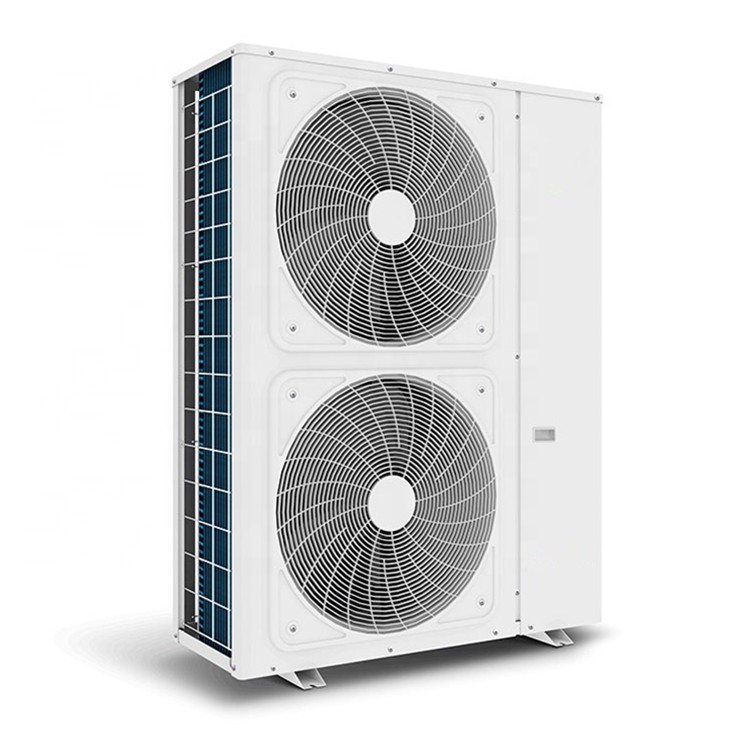Description
Air to water heat pumps transfer energy from the outdoor air into your home. The outdoor unit will exchange energy with the outdoor air and, with the help of the refrigerant cycle, release the energy at a higher (or lower) temperature to produce space heating (or cooling) and hot water.
Heat pumps operate by converting the energy in the outside air into heat, which means that every 1kW of electricity used to drive the heat pump can provide up to 5kW of energy in a well-insulated home - helping to reduce heating bills by up to 60% and CO2 emissions by 50% compared to a traditional boiler heating system.
Air to water heat pumps extract heat from the outside ambient air all year round, even in temperatures as low as -25°C. The compact and virtually silent outdoor unit uses the award-winning DC inverter PAM technology. We offer two types of air source heat pumps, a stand-alone unit and a split package
Benefits for homeowners
1. Lower fuel bills
2. Reduced carbon emissions
3. Self-contained heating and hot water solution - just add a hot water tank
4. Suitable for new build and renovation projects - can even be used with an existing boiler
5. Up to 5 times more efficient than a conventional gas boiler
6. Meets renewable energy planning requirements
Benefits for installers
1. Simple and quick installation, no refrigeration handling required (split units require refrigeration piping)
2. Inverter technology means heat output is matched to the heating load of the house
3. High COP - market leading COP of 5.0 (2HP model)
4. Weather compensation control
5. World renowned, highly reliable Hitachi high pressure scroll compressors
6. Output power from 5kW to 16kW
7. 600mm compact height option
8. Combine with other renewable technologies
How do air source heat pumps work?
An air-to-water (or air-source) heat pump harnesses the energy in the outside air and converts it into usable heat. This is done through a refrigeration process and a vapour compression cycle, which sounds complicated, but it’s basically how a fridge works, only in reverse.
Heat pumps work much more efficiently at lower temperatures than standard boiler systems. An air-to-water heat pump extracts heat from the outside air in the same way a fridge extracts heat from the inside. It can extract heat from the air even at temperatures as low as -15° C.
This makes them ideal for floor heating systems or larger radiators that can emit heat at a lower temperature for a longer period of time.
Floor heating systems circulate low-temperature water. Most conventional heating systems circulate high-temperature water, usually between 50ºC and 80ºC, while floor heating systems circulate water between 25ºC and 40ºC.
Air-to-water heat pumps are the most modern and efficient way to generate this low-temperature water supply. Heat pumps are the most efficient way to heat your home and meet your domestic hot water needs. Air-to-water heat pumps also significantly reduce CO2 emissions and your carbon footprint.
Split vs. Monobloc Heat Pumps
Split Heat Pumps
Split heat pump systems consist of two separate units: an indoor unit and an outdoor unit.
The indoor unit contains the heat exchanger and internal hydraulic system components, while the outdoor unit contains the compressor, air-cooled heat exchanger, inverter, and expansion valve. The two units are connected by refrigerant lines, which transfer refrigerant between them.
Some advantages of our split units:
1. Longer pipes allow for more flexible installation.
2. Better protection against freezing temperatures. Because of the refrigerant connection, the system will not freeze even if the power is lost.
3. No antifreeze is required, and no additional heat exchangers need to be installed.
Monobloc Heat Pumps
Monobloc Heat Pumps systems install all key components in the external unit, and do not use refrigerant lines to transfer heat to the indoors. The heated or cooled water is pumped directly into the internal unit, which is responsible for distribution.
Our Monobloc Heat Pumps are all-hydraulic, meaning they only circulate refrigerant within the external unit and use water to transfer heat inside. As such, they offer distinct advantages:
1. Standard heating pipes are used between the outside and inside.
2. The system offers better protection against refrigerant leaks and does not require a refrigerant-qualified engineer to install.
3. The placement options for the outdoor unit are more flexible due to the lack of refrigerant pipes
Contact Us
Still have questions? Ask our heat pump experts!






